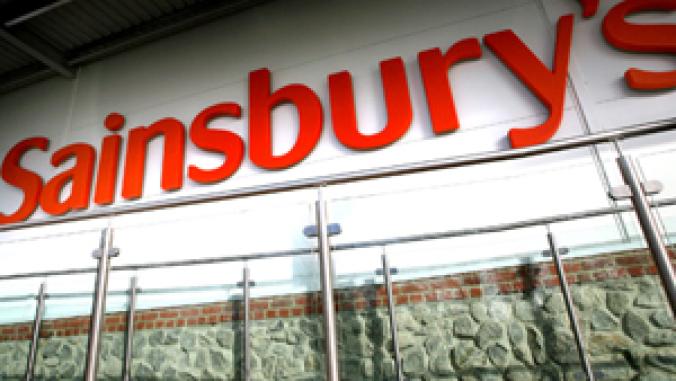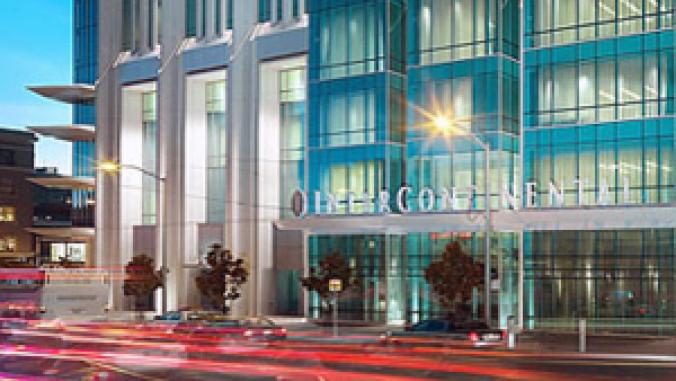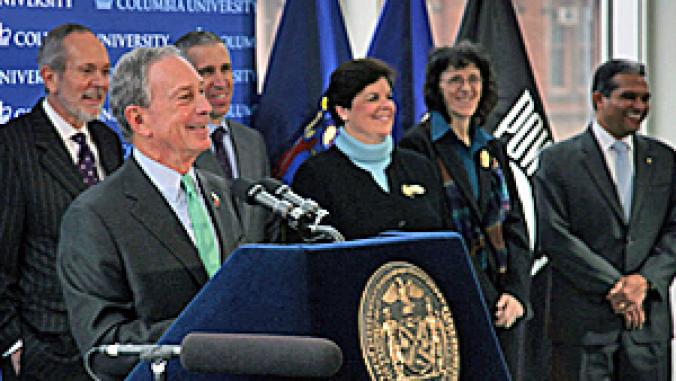Green Gains: Where Sustainable Design Stands Now
<p>What does it mean for a building to be green? Answers to questions that facility executives are still asking. By David Kozlowski</p>
What does it mean for a building to be green? Answers to questions that facility executives are still asking. By David Kozlowski
More than a decade after the term green buildings was introduced to the commercial and institutional building markets, the idea is still something of a mystery to many facility executives. Exactly what makes a green building green? Does it cost more to build? What’s the pay off? Is the whole idea a fad?
Discussions with dozens of green building experts and end-users paint a picture of an industry in the early stages of a profound transformation. The sources interviewed — building owners and developers, architects and engineers, and product manufacturers — are not Pollyannas. Even though some are far more optimistic than others are, all recognize that change takes time. They see clearly that there are challenges, both physical and psychological. But there is a strong sense that a combination of economic and environmental benefits is slowly but surely bringing green principles into the mainstream of design and construction.
What is Green?
Most building professionals eight years ago or so defined green as they saw fit. As a result, the building landscape was a mixture of faux green buildings and building products and generally recognized green ones. This range still exists today, to a lesser extent, and causes confusion for end users, especially outside of the green proponents’ circle.
Although there is still is not a simple definition of what a green building is, a consensus has developed about the indispensable elements of one: energy efficiency, indoor air quality and thermal comfort. Each must be far better than what is found in most conventional Class A buildings. But most experts believe these are only a foundation. They believe the bar for green building design and construction should be set higher.
And attempting to set that bar higher is LEED, a green building rating system that is quickly making its rounds through the commercial and institutional markets. Born in discussions among the founding members of the U.S. Green Building Council in 1993 and launched in 1999, LEED has become almost synonymous with green buildings. LEED stands for Leadership in Energy and Environmental Design. It forms the basis of a whole platform of rating systems that the Council is developing, including LEED for Existing Buildings, LEED for Commercial Interiors, and LEED for Core and Shell. The Council also is developing guidance documents for interpreting LEED for use in schools and retail buildings.
The rating system is based on earning credits for various green building attributes and includes four levels of certified buildings: Certified, Silver, Gold and Platinum. The more credits, the higher the recognition and certification.
LEED is significant for building owners because it established for the first time a set of green standards. Regardless of what one thinks of the current requirements for a LEED building — and there is controversy here — the rating system offers guidelines and direction in an otherwise rudderless world of green buildings. LEED has everyone thinking in more concrete terms about what a green building is and should be.
The success of LEED, however, is causing growing pains in the Council that are becoming more evident as the Council puts together an update to LEED 2.1 and a new LEED 3.0, due out in 2005.
One camp in this discussion thinks that if the Council makes LEED certification any more restrictive, LEED will become marginalized within the green building movement and the Council will lose the momentum it has helped establish.
“Various interest groups within the Council have become zealots on green issues and if they sway the direction of LEED they will make it damn difficult to certify a building,” says one expert.
The other camp thinks it’s incumbent upon the preeminent green building organization to raise the bar.
“We really should be thinking of buildings now as human habitats,” says one expert. “It’s a radically different world view, true. But most people take buildings for granted, and we’re finding that a building’s impact on people and the environment is too profound to allow that.”
Council officials responsible for finding an acceptable middle ground are painfully aware of the push and pull taking place, and they are working on solutions. “We going to make the credits smarter not harder,” one Council official says. “We want to do the 10 percent of things to achieve 90 percent of the impact.” But exactly how that is going to happen is not clear.
As near as it is to being a national standard, LEED represents only a few percent of all new buildings and not even all green buildings. Numbers are hard to determine, but some experts say many more building owners use LEED or some other guideline to build their building without bothering to register them. Some say up to twice as many projects are based on LEED as those that are registered with the Council. These project owners are not only putting their own stamp on green buildings but also possibly doubling the size of the market.
So what is a green building? Today for most experts, it’s a building that uses a careful integrated design strategy that minimizes energy use, maximizes daylight, has a high degree of indoor air quality and thermal comfort, conserves water, reuses materials and uses materials with recycled content, minimizes site disruptions, and generally provides a high degree of occupant comfort. A lot of what makes a building green happens in the design stage. Owners looking for a simple template solution will have to continue to do so. True green buildings do not fit a mold.
Do Green Buildings Cost More?
One area of confusion among building owners is the contention that green buildings don’t cost any more to design and build than a conventional building. The truth is they usually do. Recouping that cost is possible, however.
There is a general agreement that if an owner considers the life-cycle cost of a building, then a green building is cheaper. Green buildings have been shown to be less expensive to maintain and operate than conventional buildings, and any cost premium is more than made up with operational savings.
Developers and owners, who do not reap operational savings, however, are concerned with first costs, not life-cycle costs. One end user says, “If I have to pay more for a base building, I have to charge more rent, and right now, the market isn’t supporting that.”
First cost is still the major stumbling block for rapid acceptance of green design and construction.
Estimates from the field indicate that green buildings cost from 10 to 15 percent more. Even in energy-code-restricted, environmentally conscious California, green buildings may cost up to 5 percent more to build.
The first-cost premium can be minimized and, in some cases, eliminated by a careful, integrated design. Building owners interested in minimizing first costs can also help themselves by having an open mind about a building’s appearance and operation.
Energy efficiency is key to eliminating the first-cost premium. Measures such as high-performance glazing and proper siting would allow the downsizing of many mechanical and electrical systems. Even though it is anathema to spec builders and many engineers, a big part of the strategy is to reduce the fudge factor for extra capacity.
Minimizing first cost is usually only possible if the design team has extensive experience in green design.
So while some green buildings, even LEED-certified ones, have been built for the cost of conventional buildings, most building owners won’t be able to achieve this goal, especially not on the first project.
Will green buildings get cheaper to build, even on a first-cost basis? Many think so. As more buildings are built, as the design process is better understood, and as manufacturers respond with greater supply of less expensive products, the first cost should drop.
What Does Your Money Buy?
If green buildings cost more, are they worth more? Again, it depends on how worth is measured. If defined by market value, the jury is still out. Not enough buildings have changed hands to make that case. In five to 10 years, many experts expect to see a value increase. The fact that a number of large regional and national developers and owners are pursuing green buildings suggests they might be anticipating a higher price and greater market demand. Prime Realty Group, a REIT, has built a very successful 1.5 million square foot spec green building in Chicago that leased 70 percent of its space quickly, and is considering another green spec building in Chicago.
Green proponents also point to The National Geographic headquarters in Washington, D.C., which has received a 37 percent increase in value based on a city assessment. But that is an assessment and not an appraisal. Still, it’s a start.
Banks, insurance companies and appraisers need to pick up on the interest. All it might take for others to follow is for a large national bank, for instance, to give a 0.5 percent break on a loan or for a large national insurance company to give a 10 percent break on a policy. Others say that lenders could grant larger operating loans based on the lower operating costs of buildings. But none of this has happened, yet.
Appraisers — and their clients, lenders — are not even willing to factor in energy efficiency in a building. While there are some signs this may be changing, other green factors are likely to take longer.
There is also an argument that green buildings lease quicker. That is true in some cases, but it might reflect market dynamics more than the green building influence. One developer in Washington, D.C., a stable market, is currently having difficulty leasing his green buildings.
One area where the value of green buildings is easy to document is operating costs. To be a LEED building, for instance, the building must be 30 to 60 percent more efficient than ASHRAE 90.1-1999 calls for. Many green buildings typically fall into the 30 to 50 percent range. For a LEED Certified building, this could mean $0.80 per square foot per year or more in energy savings alone, according to a U.S. Environmental Protection Agency report on 2002 Energy Star-labeled buildings.
There are the less tangible benefits. For example, an energy-efficient building produces fewer greenhouse gas emissions and can help show that a company is concerned about the environment.
If the monetary value of green buildings is not evident, are there benefits other than energy and emission reductions? Clearly there are. They offer better air quality and access to more daylight, to name two. But it is difficult to put any hard numbers on this right now.
Some proponents have tried to put hard numbers on one soft issue: productivity. Given the cost of wages and benefits vs. the amount of the green premium, the argument goes, as little as a 1 percent increase in productivity over as short a period as week to a few years, depending on how high salaries, would more than pay for the green costs.
Daylighting provides, perhaps, the best evidence of a productivity link. Epidemiological and laboratory studies have shown that daylight could affect productivity. Many accept these studies as proof; others do not.
Access to views of the outside and the presence of daylight have been shown to provide psychological benefits. Other studies link some green building aspects, such as improved lighting and better indoor environmental quality, with improved work effectiveness and drops in absenteeism. And there is an intuitive sense that daylight and good indoor air quality create a more comfortable space.
The only problem is that there are no hard numbers — at least scientifically valid ones — to prove productivity. Attempts to replicate some studies have been difficult and unsuccessful. Hampering field research is the belief that additional studies are unnecessary or the fear that building owners may be sued based on evidence of poor building performance.
Is It a Fad?
Some proponents see green buildings turning the corner to mass acceptance. Optimists say that green buildings will be the standard in five to 10 years. Most are a little more conservative and look 20 years or more down the road.
The Council’s goal is to certify 25 percent of new buildings. It may take a while before that happens, if it ever does. But LEED certification isn’t the only measure of progress.
There are other indications that green buildings are already edging into the mainstream.
One expert points to a large design-build contractor with a request for proposal (RFP) from a large developer for a spec building.
“The RFP was sprinkled with references to green buildings — daylighting, indoor air quality, respect for local culture, landscaping considerations,” he says. Neither the owner nor the contractor were “greenies,” but both recognized a value, perhaps market-driven. Neither was considering getting the building LEED certified.
The National Association of Home Builders (NAHB) is also closely watching the Council’s moves toward a residential rating system. This influential association might compete with the Council and the LEED for Homes rating system by establishing its own label or try to influence the LEED process. Regardless, the NAHB sees the writing on the wall.
The same holds true for the commercial market. A number of large manufacturers are expressing a long-term interest in green products and are in the process of retooling their industries to meet what they perceive as huge demand. Referring to green buildings, one manufacturer’s spokesman says, “This is the future.”
Are they giving up their conventional product lines just yet? No, but many manufacturers say they are spending considerable amounts of money on the prospect of a green market.
Even corporations not likely to gain from the public recognition for being green are building green. Goldman Sachs is building a new green headquarters in Jersey City, N.J.
Even owners who can’t define a green building today think that, at some point, they might be building one. Many say green principles are now influencing design decisions in conventional buildings.
One major end user says that even though his corporation doesn’t plan on building a green building within the next 10 years, “I think they will change the way we think about buildings in the near future.”
What Will Make It Happen?
Gradually, green buildings are becoming mainstream in the public sector as the federal government and many states and cities require new buildings to meet some sort of green guidelines. To date, in addition to a half dozen federal agencies, at least eight states require all publicly funded buildings to follow green guidelines. As the largest owner in the United States, U.S. General Services Administration requirement to use LEED is a potent ingredient for change.
Despite government’s and Council’s impact, some are still disappointed with the pace of green building acceptance in the private world and think additional efforts are needed.
There have been instances in the private sector where rules have been waived to favor green buildings. Permitting processes have been relaxed for owners installing green systems, taking weeks off the construction schedule. Some think these steps could go further. But to date, these efforts are on a case-by-case basis.
Many green building proponents talk of an increasing need for education about the benefits — financial and otherwise. Some think that the global environment argument isn’t holding much water with owners, and more effort should be made to educate end users on other more tangible benefits.
“I can make the case with an owner that indoor air quality is a big benefit of green buildings much more easily than I can using global warming,” an expert says.
But it’s not just the owner that needs to learn these things, many say. Tenants and especially brokers need to understand the benefits of green buildings.
The demand in the leased market is not where it needs to be to move green buildings forward, faster. And some blame brokers for the lack of interest or education on green buildings. Others say green buildings just won’t cut it in some markets because of competition and downward pressure on rents. Green is a first-cost issue for tenants as well. There’s a lot of talk but little action so far.
So if the market can’t do it, some experts think the green building industry requires other incentives — financial ones. But there is little support for tax credits or rebate incentives that were popular in the 1970s for solar systems. While similar programs exist today for solar systems, many think they are not long-term solutions for green buildings or solar systems for that matter.
Rather, a number of experts think that tax disincentives would be a better idea.
“What we need to do is make pollution cost more,” a manufacturer representative says. “We could reduce income taxes but increase pollution taxes. A carbon tax, for instance. Or tax a barrel of oil and make it reflect its true cost to the environment.”
No one thinks any incentives or disincentives are likely soon. If there is one thing that might make a difference in the near future, it’s the price of energy. Given the track record of green buildings’ energy efficiency accomplishments, some think, owners who previously shunned the cost premiums might take a second look.
Some think pure greed may help promote green buildings. Wall Street investors could be profiting from green buildings if a plan to start up a green building commercial mortgage backed security (CMBS) program gets off the ground. The green CMBS investment vehicle is being spearheaded by Sen. Jon Corzine, former CEO of Goldman Sachs.
Money and Politics
Green buildings are attracting a more diverse audience than they did 10 or even five years ago. Green buildings are changing the way the industry views all buildings. How far the movement will go and how much of an impact it will have on the marketplace depends in part on factors like politics, the economy and energy prices. But it is clear that green buildings are no flash in the pan.
Europe is certainly attesting to that. It is ahead of the United States, both in the greenness of its buildings and also in the sheer number of them. Japan is quickly catching up. Efforts are currently ongoing in China.
If there is one thing for certain, it’s change. And building owners who either see in green buildings the marketing advantage, the life-cycle cost advantage, the people-health-and-comfort advantage or the global-environmental advantage are all paying close attention. Many owners and developers appear to be waiting for more evidence of the benefits, market value or market demand, and waiting for costs to go down. The speed with which things begin to happen will determine how long it takes for green buildings to move to the center of the building industry stage.
Sources
- Marc Ahrens Dupont
- Ray Anderson Interface
- Rob Batt University of California San Diego
- Deborah Beck Real Estate Board of New York
- Jerry Black Duke University
- Penny Bonda EnviroDesign Works
- William Browning Rocky Mountain Institute
- Denis Darragh Forbo
- Jim Demarest University of South Carolina
- David Ejadi The Weidt Group
- W. Anthony Fulton San Diego State University
- Neil Gaffney National Association of Home Builders
- Art Gensler Gensler & Assoc.
- Henry Glickman Loeb Partners Realty
- David Gottfried WorldBuild Technologies
- Bob Haskel Emory University
- Judith Heerwagen JH Heerwagen & Assoc.
- Lisa Heschong Heschong Mahone
- Nigel Howard U.S. Green Building Council
- Michael Italiano Institute for Market Transformation to Sustainability
- Mike Jednak St. Joseph College
- Chris Johnson Solutia
- Bill Koelm Albuquerque School District
- Jerry Lea Hines
- Sandy Lusk Honeywell Nylon
- Anthony Marchetta LCOR
- David Mueller Interface Architectural Resources
- Paul Murray Herman Miller
- Tom Paladino Paladino & Co.
- Anthony Perez Bank of America
- Jim Proehl PM Realty Group
- David Reynolds City of Chicago
- Karen Rowe Amtico
- Anita Snader Armstrong
- Debbie Steines CIGNA
- Robert Thompson Wells Fargo Bank
- Jim Toothaker High Performance Green Building Services
- Paul Von Paumgarten Johnson controls
-
Alex Wilson Environmental Building News
-----------
This article first appeared in July 2003 issue of Building Operating Management.




